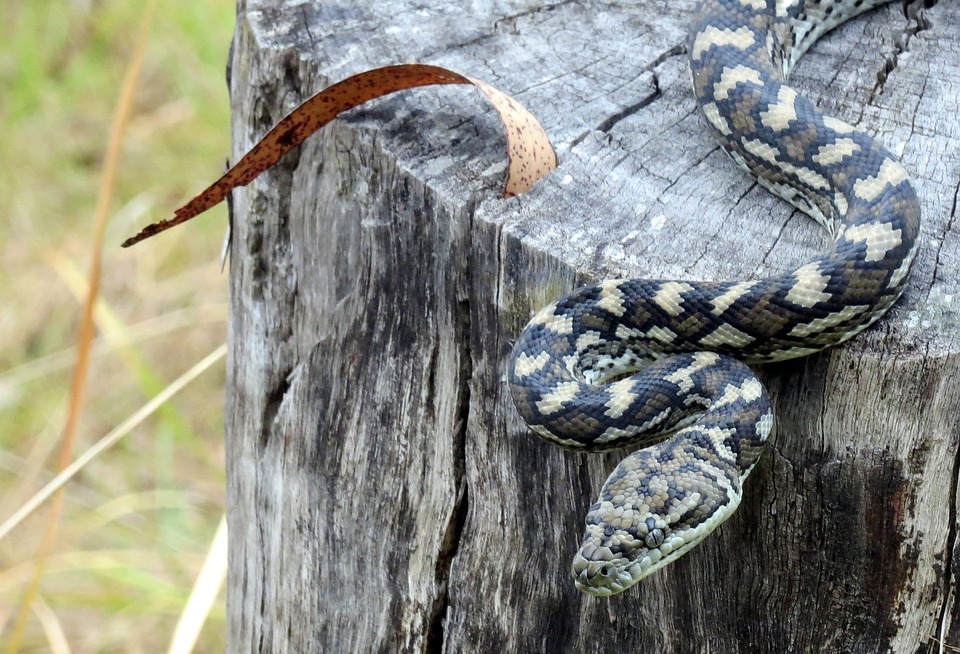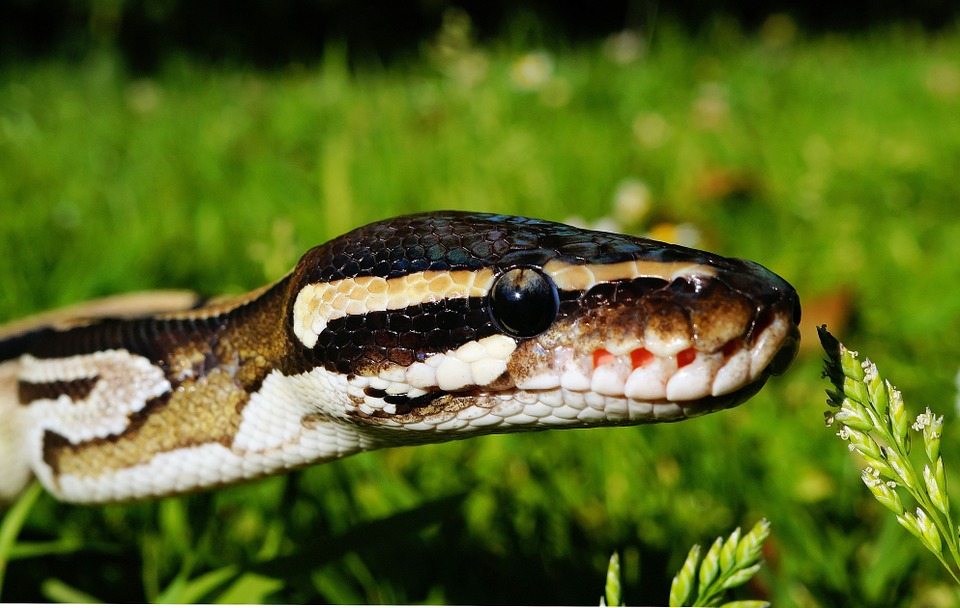This article explores the complex relationship between snakes and rabbits, examining whether snakes include rabbits in their diet and the factors influencing this interaction. We'll delve into the diverse feeding strategies of various snake species, taking into account their size, habitat, and hunting techniques. The article will also shed light on the ecological roles of both snakes and rabbits, revealing the intricate web of predator-prey relationships that govern natural ecosystems.
Part 1: The Enigmatic World of Snake Feeding

1.1 Snake Species and their Diverse Diets
Snakes exhibit a remarkable diversity in their dietary habits, with different species evolving specialized feeding strategies to thrive in their respective environments. Let's explore the three primary categories of snakes based on their feeding preferences:
- Constrictors: These snakes, including the iconic pythons and boas, are known for their powerful muscular bodies. They subdue their prey by wrapping themselves around it, constricting its breath and eventually suffocating it. Constrictors are renowned for their ability to consume large prey, often exceeding their own size. This includes mammals like rabbits, birds, and even small deer.
- Venomous Snakes: Venomous snakes, such as vipers and cobras, rely on their potent venom to paralyze their prey. They inject venom through specialized fangs, incapacitating their victims and making them easier to swallow. While venomous snakes generally prey on smaller creatures, like rodents, amphibians, and insects, some larger species can also subdue rabbits.
- Non-Venomous Snakes: Non-venomous snakes, like garter snakes and king snakes, lack venom and rely on other methods for capturing prey. These snakes typically consume a variety of small animals, including amphibians, lizards, and rodents. Occasionally, non-venomous snakes may prey upon young or small rabbits, but this is not their primary food source.
1.2 Factors Influencing Snake Prey Choice
The prey selection of a snake is a complex interplay of several factors that dictate its survival and success.
- Size: A fundamental rule in the animal kingdom is that predators typically prey on creatures smaller than themselves. This allows for efficient capture and consumption. Snakes generally adhere to this rule, ensuring they can subdue and swallow their meal without struggling.
- Habitat: The environment a snake inhabits plays a critical role in shaping its dietary choices. For instance, snakes residing in grasslands may have access to a wider variety of rodent prey, while those dwelling in forested areas may focus on amphibians and lizards. The availability of prey species in a particular habitat directly influences a snake's feeding habits.
- Hunting Strategies: Snakes have evolved diverse hunting strategies that cater to their specific prey and environments. Ambush hunting, where the snake lies in wait and strikes its unsuspecting prey, is a common strategy. Others actively pursue their prey, relying on speed and agility to catch their meal. Some snakes employ constriction, while others use venom to incapacitate their victims. The hunting strategy employed by a particular snake species dictates the types of prey it can effectively capture.
Part 2: The Enigmatic Relationship Between Snakes and Rabbits

2.1 Rabbits as Prey for Snakes: The Reality Behind the Myth
The question of whether snakes eat rabbits has been a subject of debate and curiosity for many. While it is true that not all snake species prey on rabbits, there are several instances where this predator-prey interaction occurs.
- Constrictors: Larger constrictors, like Burmese pythons and reticulated pythons, are known to include rabbits in their diet. Their massive size and powerful muscles allow them to subdue and consume even adult rabbits, swallowing them whole thanks to their flexible jaws and expandable bodies.
- Venomous Snakes: While some venomous snakes, such as rattlesnakes and copperheads, are capable of consuming young or small rabbits, it's not their primary food source. They primarily target rodents and other smaller mammals, relying on their venom to paralyze and subdue their prey.
- Non-Venomous Snakes: Non-venomous snakes, like king snakes and garter snakes, rarely prey on rabbits. Their small size and limited hunting abilities make it challenging for them to subdue and consume rabbits, which are relatively large and agile creatures.
2.2 The Vital Role of Rabbits in Ecosystems
Rabbits, despite being prey for a variety of predators, play a significant role in maintaining the balance and diversity of natural ecosystems.
- Prey for Predators: Rabbits are a vital food source for numerous predators, including snakes, foxes, hawks, coyotes, and owls. Their abundance in many ecosystems contributes to the stability of the food chain, ensuring the survival and flourishing of various predator species.
- Herbivores: Rabbits are herbivores, primarily feeding on grasses, herbs, and other vegetation. Their grazing habits contribute to the control of plant populations, preventing excessive growth and promoting a diverse and balanced plant community.
- Keystone Species: In certain ecosystems, rabbits can be considered keystone species. This means their presence and abundance significantly influence the structure and functioning of the entire ecosystem. Their grazing activities can shape the landscape, creating habitats for other animals and influencing the distribution of plant species.
Part 3: Unveiling the Truth Behind Common Misconceptions
3.1 Myth Debunked: Snakes Don't Eat Rabbits
This is a common misconception perpetuated by a lack of understanding about the diverse feeding habits of snakes. While not all snakes prey on rabbits, larger constrictors and some venomous species do include rabbits in their diet. It's important to recognize that snake species exhibit a wide range of dietary preferences, influenced by their size, habitat, and hunting strategies.
3.2 Myth Demystified: Snakes Are Always Dangerous to Rabbits
This misconception stems from a fear of snakes and a lack of awareness about the specific predator-prey relationships in nature. While some snakes can prey on rabbits, most snakes are not a threat to them. Only a small percentage of snake species are large enough and capable of consuming rabbits. The majority of snakes are too small or have different dietary preferences.
3.3 Separating Fact from Fiction: Snakes Hunt Rabbits for Sport
It's crucial to remember that snakes are not driven by emotions or a desire for entertainment. They are driven by instinct and the fundamental need to survive and obtain energy. The act of hunting is simply a natural behavior ingrained in their biology, not a form of sport or amusement.
Part 4: The Essential Role of Predator-Prey Interactions in Nature
4.1 Maintaining Ecosystem Balance: A Symphony of Interactions
Predator-prey interactions are fundamental to the functioning and stability of ecosystems. Predators play a crucial role in regulating prey populations, preventing overgrazing and ensuring a diverse range of plant and animal species. This delicate balance is vital for a healthy and thriving ecosystem.
4.2 Natural Selection: Shaping Evolution Through Interaction
Predator-prey interactions drive natural selection, the process through which organisms with advantageous traits are more likely to survive and reproduce, passing on those traits to their offspring. This constant interplay between predators and prey leads to the evolution of remarkable adaptations in both groups. For instance, rabbits that are faster, more agile, or possess keen senses are more likely to evade predators, passing on these beneficial traits to their offspring. This continuous cycle of adaptation and counter-adaptation is a testament to the power of natural selection.
Part 5: Addressing the Mysteries Surrounding Snake-Rabbit Interactions
5.1 Can a Snake Eat a Full-Grown Rabbit?
While it is not common for all snake species, larger constrictors, like Burmese pythons and reticulated pythons, are capable of consuming full-grown rabbits. Their massive size and expandable jaws allow them to swallow prey much larger than their heads. However, this is not a typical occurrence and only a select few snake species have the capacity to subdue and consume adult rabbits.
5.2 Are Snakes a Major Threat to Rabbits in the Wild?
While snakes can prey on rabbits, they are not the primary threat to their survival in the wild. Other predators, including foxes, hawks, coyotes, and owls, pose a greater risk to rabbit populations. However, snakes contribute to the natural regulation of rabbit populations, ensuring a healthy balance within the ecosystem.
5.3 Are There Snake Species that Specifically Target Rabbits?
There is no known snake species that specializes solely in hunting rabbits. Snakes tend to prey on whatever is most readily available in their habitat. They are opportunistic feeders, adapting their dietary habits to the resources available in their environment.
5.4 What Should I Do if I See a Snake in My Garden?
If you encounter a snake in your garden, it is advisable to observe it from a safe distance. Avoid disturbing or approaching it, as this could provoke a defensive response. It's important to identify the snake species to determine if it poses any threat.
5.5 How Can I Deter Snakes from My Garden?
You can implement several strategies to deter snakes from your garden:
- Removing Potential Food Sources: Control rodent populations by sealing up holes and cracks in your home, eliminating areas where rodents can nest, and removing potential food sources like spilled food or birdseed.
- Eliminating Hiding Places: Keep your garden tidy by trimming vegetation, removing piles of wood or debris, and ensuring there are no areas where snakes can hide or seek shelter.
- Using Natural Repellents: Certain plants, such as garlic, onions, and marigolds, have a pungent odor that can deter snakes. Planting these around your garden may help discourage snakes from entering.
- Creating a Barrier: Place gravel, crushed rock, or chicken wire around your garden to make it more difficult for snakes to access.
By understanding the intricate relationships between snakes and rabbits and the factors influencing their interactions, we gain a deeper appreciation for the delicate balance of nature. We learn to respect the role that both species play in maintaining the health and diversity of our ecosystems.
Everyone is watching
-

Do Rabbits Lay Eggs? (The Surprising Truth)
OTHER TYPES OF PETSThis article will unravel the common misconception that rabbits lay eggs, exploring the fascinating world of r...
-

What's a Group of Rabbits Called? (A Comprehensive Guide)
OTHER TYPES OF PETSThis article delves into the fascinating world of rabbits, exploring the various terms used to describe a grou...
-

Can Rabbits Eat Grapes? A Guide to Safe Rabbit Treats
OTHER TYPES OF PETSThis comprehensive guide will explore the safety and suitability of grapes for rabbits, providing detailed inf...
-

Predators That Hunt Rabbits: A Guide to Natural Enemies
OTHER TYPES OF PETSI've always been fascinated by the circle of life, that delicate dance between predator and prey. Growing up ...
-

Are Rabbits Nocturnal Animals?
OTHER TYPES OF PETSThe question of whether rabbits are nocturnal animals is a fascinating one, with a surprisingly complex answer...
